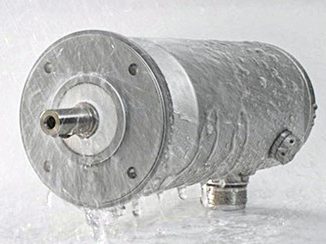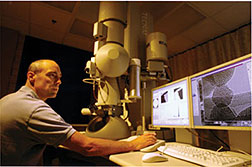Stan Trout, Spontaneous Materials
We conclude this series with the seventh and final blog, describing the many types of mistakes made with permanent magnets. My intent is to help engineers in the future avoid mistakes made in the past, and not to embarrass anyone.
The last two mistakes on my list are:
- Ignoring appropriate mechanical considerations, such as using a magnet as a structural part, believing that chips and cracks are not normal for brittle materials, or ignoring the effect of magnetic debris.
- Treating magnets as toys
Most engineers are surprised when I tell them that the mechanical properties of any grade of magnet are measured only once. They are measured once so that they may be included in the datasheet. Since mechanical properties almost never come up in the conversation, there is no point in measuring them again.
Permanent magnets are almost never put in a design because of their mechanical properties. They are only included because of their magnetic properties. Mechanical properties are only included in datasheets for the sake of completeness, and little else.
This means that the mechanical robustness of a design must come from the components other than the magnet. Applying stress to a permanent magnet is asking for trouble.
In the early days of SmCo magnets, many people referred to them as jewels. They certainly had a nice appearance, perhaps too nice. It is difficult to maintain a magnet’s perfect appearance all the way through the process into their ultimate use. Chips and cracks happen all the time to magnets, and they should not be considered automatic disqualifiers. The best approach is to include a note on the magnet drawing to spell out what amount of chipping or cracking might be acceptable. This is a good topic to discuss at the beginning of a project, otherwise the buyer and seller will need to argue out this point later when chips and cracks inevitably occur. Suppliers have been known to ship nearly perfect magnets early in a business relationship and then gradually relax the physical standards later. Caveat Emptor!
Most magnetic devices have what is called a gap. This unique region, where the magnetic flux is available in the air, not buried inside the magnet or the return structure, is important. Without a gap, most of the magnetic devices we know would not work. Gaps also have a problem in that they are natural collection points for any loose magnetic material. For example, any dust that contains enough iron will ultimately find its way to the gap and accumulate there. Where it is often difficult to remove. Debris in this collection point has the effect of reducing the efficiency of the device and may eventually cause it to fail. It is important to keep the environment around devices clean, to preclude anything that might collect in the gap.
As children, one of the first things we notice about magnets is that they can attract and repel each other, depending on how we configure the poles of the magnets. It is a cause for great fascination. Likely, the first magnets we handled actually were toys, just large enough to demonstrate the powerful effect of magnetic fields, and small enough not to be hazardous.
Before we had rare earth magnets, making magnets safe for children or adults to handle was a relatively easy task because the materials available at the time were all relatively weak. Once rare earth magnets came on the scene, we faced a conundrum. Rare earth magnets are especially hazardous when they are large and free to move. Anything in their way, as they fly together, is in serious danger. As we shall see, making them smaller creates a different problem. They become a swallowing hazard.
Perhaps a personal story would be illuminating. As a graduate student, I received several SmCo5 one-inch cube samples to use in my research. Before I could store them and while my back was turned, one of my lab mates decided to play with these samples. It didn’t take very long. I heard a loud snap and when I turned around, I saw my lab mate was bleeding from a gash in his hand and my magnets were shattered. It was a good lesson for both of us in the dangers of isolated magnets and their sharp edges. Large magnets are not toys.
More recently, the US Consumer Products Safety Commission has banned small spherical NdFeB magnets being sold as toys. Typically, these magnets are 3 to 5 mm in diameter. They certainly show the strength of sintered NdFeB magnets very well. The concern is the report of several cases of children swallowing a few magnets. Should the magnets snap together while passing through the digestive system, severe damage may result, even death. Ignoring the safety concern, one Colorado company has persistently fought the ban of these small spherical magnets, and may prevail in court. Allowing these small magnets back into the marketplace as toys would be truly unfortunate.
Now that I have completed the series, I would like to ask my readers two questions. 1) Did you learn anything new that you would care to share? 2) Are there any mistakes left that I should cover? Please email me your comments.
I wish you a mistake-free future!
 About the Author
About the Author
Dr. Stan Trout has more than 35 years’ experience in the permanent magnet and rare earth industries. Dr. Trout has a B.S. in Physics from Lafayette College and a Ph.D. in Metallurgy and Materials Science from the University of Pennsylvania. Stan is a contributing columnist for Magnetics Business & Technology magazine. Spontaneous Materials, his consultancy, provides practical solutions in magnetic materials, the rare earths, technical training and technical writing. He can be reached at strout@ieee.org.



